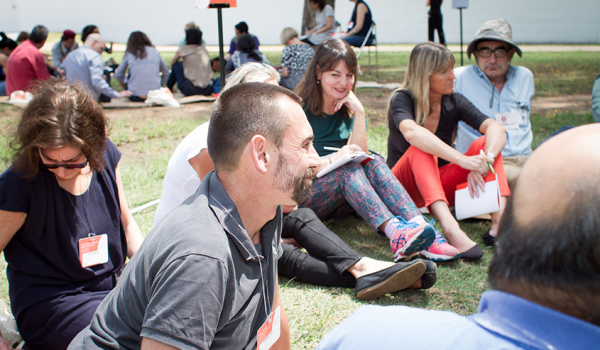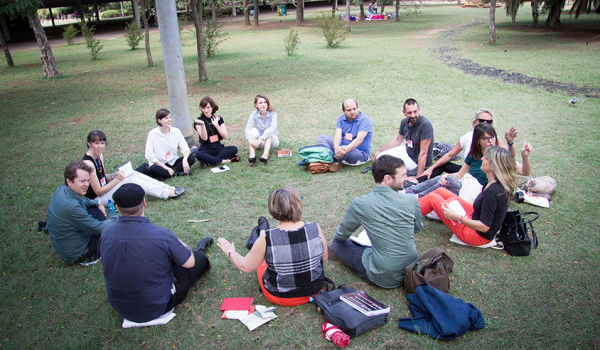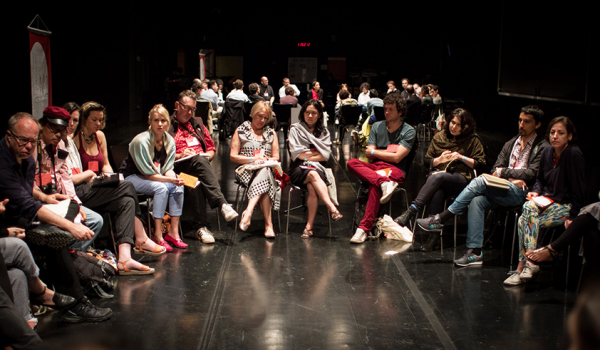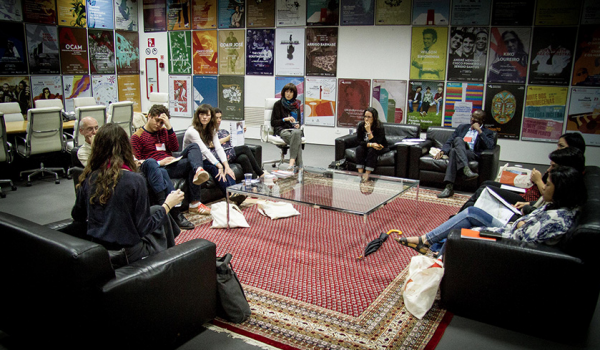Part of an entanglement of political, diplomatic, cultural and artistic forces, contemporary Biennials are constantly facing the demands for international projection while responding, at the same time, to local audiences, not only via their outreach and educational programs, but also through their curatorial frameworks. These intertwined agencies end up defining the core of their political agendas and sometimes setting the limits that determine the level of independence secured to biennial curators and organizers.
The second edition of the World Biennial Forum happened alongside the 31st Bienal de São Paulo. For this project, VASTO established the workshop’s methodology and coordinated the discussions among the Forum’s participants.
Datasheet
2nd World Biennial Forum
27-28 November, 2014
São Paulo, Brazil
Artistic directors | Charles Esche, Galit Eilat, Nuria Enguita Mayo, Pablo Lafuente, Luiza Proença, Oren Sagiv, and Benjamin Seroussi
Organized by Fundação Bienal São Paulo, Biennial Foundation, ICCo – Instituto de Cultura Contemporânea
2nd World Biennial Forum Workshop
Coordination and methodology | Sabrina Moura – Vasto
Moderators | Lígia Afonso, Monica Espinel, Marta Ramos Yzquierdo
This complex scenario set the basis for the structuring of the themes debated by the second edition of the World Biennial Forum, which included archives and biennial memories, display and interpretation of artwork, the overcoming of national representations, the relation between education and ideology. Organized in morning sessions of workshops open to practitioners and afternoon sessions of public programs, the forum gathered a diverse range of visual art biennials from all over the world.
The methodology applied in the morning workshops sought to establish an autonomous process of open discussions that addressed the questions raised by the Forum’s artistic directors in respect to concrete experiences and case studies brought by the participants. In order to allow for exchanges on a more intimate scale, the 66 participants who attended the first day, and 56 of the second day, were divided in smaller workgroups according to their topics of interest.
Although not confronted with a paradigm as fixed as the Museum, most of the biennials born from the second half of the 20th-century seem to counter the legacy of the Venice Biennale and its national representation structure. Either young or established, informal or institutionalized, the variety of initiatives that attended the workshops was willing to take advantage of the platform established by the forum, favoring new collaborative networks, as well as the exchange of information and practices, often so experimental and constituted in the immediate making of these biennials.





